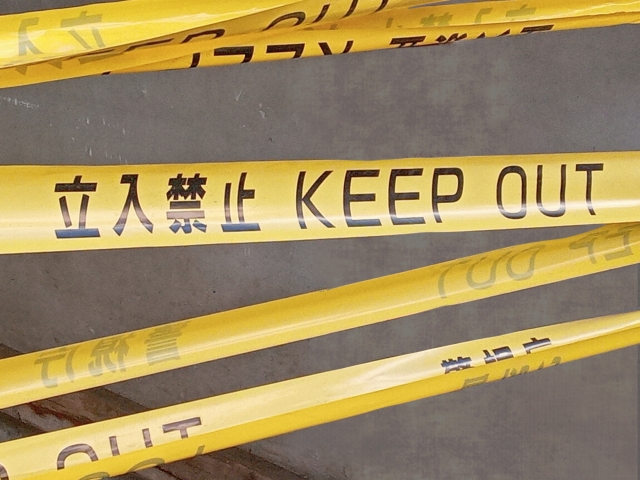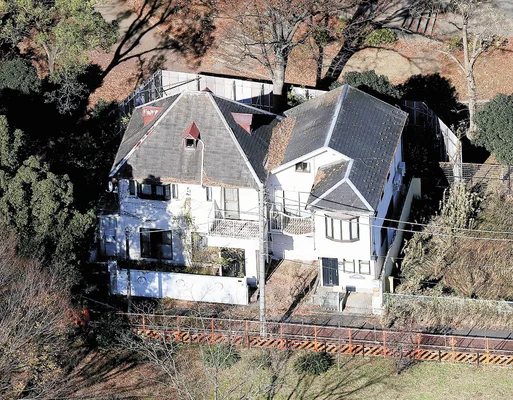Introduction

Have you ever heard of an unsolved case in Japan called the Setagaya Family Murders Case?
This case is a gruesome and heinous crime for which the perpetrators have yet to be caught.
The reason we are mentioning this case now is because it recently became a hot topic of conversation in Japan.
The reason is that the families are still hoping for an arrest and do not want the case to be forgotten.
Since the incident happened in December 2000, the younger generation of Japanese does not know about it.
The bereaved families said that they do not want this heinous incident, which people are beginning to forget, to be forgotten.
It is true that there are many such heinous crimes in Japan.
I would like to talk about them one by one in this blog.
Summary (Setagaya Family Murders Case)

Overview of the Setagaya Family Murders Case
The Setagaya Family Murder Case is an unsolved serious crime that occurred on December 31, 2000, in Kamisoshigaya, Setagaya Ward, Tokyo. In this case, Mikio Miyazawa (44 years old at the time) and his family were brutally murdered in their home.
Occurrence of the Incident
- The incident occurred on the morning of New Year’s Eve 2000 at the Miyazawa home.
- Four members of the family were murdered, and traces of the murderer’s presence were found in the house.
Progress and Difficulties in the Investigation
- Physical evidence such as fingerprints, palm prints, footprints, and bloodstains were left at the crime scene, yet the perpetrators have not been identified.
- Approximately 293,000 investigators have been assigned to the case without success in apprehending the perpetrators or uncovering a motive.
Hypotheses on Motive and Involvement
- There is no clear information on the motive for the crime, but involvement of someone close to the Miyazawa family or a plan targeting relocation compensation money is suspected.
- The investigation is focusing on someone with intimate knowledge of the Miyazawa family.
Current Status and Police Efforts
- Police continue to make efforts to solve the case, including appeals for information.
- Ahead of the 23rd anniversary of the incident, the police are distributing leaflets to seek the public’s cooperation.
Continued Call for Information
The Setagaya Family Murder Case remains one of Japan’s most tragic and mysterious cases. Despite a large amount of physical evidence, the perpetrators and their motives are yet to be identified. The police and society continue to call for information and efforts to uncover the truth.
Motive in the Setagaya Family Murders Case

The motive of the murderers in the Setagaya Family Murder Case is still not clearly known. This case occurred late at night on December 30, 2000, in Setagaya Ward, Tokyo, where four members of a family were murdered. The police are investigating based on a large amount of evidence, but have yet to identify the murderer or find a motive.
Many details of the case remain a mystery, and the motive for the crime is one of them. Why was the family targeted and what was the background that led to the crime? These questions remain unanswered to this day.
About Considering
Disorganized criminal with mental illness
The brutality of the crime and the large number of items left behind may indicate that the crime was committed by a perpetrator in a mentally unstable state.
Foreigner
The brutality of the crime differs from the usual Japanese pattern, leading some to believe that the crime was committed by a foreigner.
New findings and roots of the perpetrator
Sometimes, even after some time has elapsed since the crime, new findings are made that provide a new perspective on the perpetrator’s roots. Again, this may not lead directly to a motive for the crime, but it may provide a new direction for the investigation.
No firm evidence or conclusions about the motive for the crime have yet been found, and various speculations and considerations are still being made. It is hoped that detailed investigation and analysis by the police and investigative agencies will continue.
Lack of evidence : why not identified?

It is said that the evidence was more than sufficient.
There are several possible reasons why the murderer in the Setagaya Family Murder Case was not identified. This case occurred on December 31, 2000, in Setagaya Ward, Tokyo, where four members of a family were murdered.
So far, the police have dispatched a total of 280,000 investigators to the crime scene and matched the killer’s fingerprints with a huge amount of data, about 50 million fingerprints and 1.3 million DNA samples, but no arrests have been made.
According to some reports, the reasons for the difficulty in solving this case include
Huge amount of data and matching process
There is so much data such as fingerprints and DNA of the perpetrators, and the process of matching this data is complicated and time-consuming.
Difficulty in identifying the perpetrator
Evidence left at the crime scene has led to the identification of some physical characteristics of the perpetrator, but this has not yet been linked to a specific person.
Confirmation of New Testimony
New testimony and information about the crime sometimes emerges, but it takes time to verify it and link it to the identification of the perpetrator.
Problems in the early stages of the investigation
It has been pointed out that there may have been problems with some of the responses in the early stages of the investigation.
based on the above
The failure to apprehend the perpetrators may have been due to a combination of these factors. Police are continuing their investigation and hope to find new information and evidence that will help solve the case.
Delays in the Initial Investigation
Several issues have been raised regarding the initial investigation of the Setagaya Family Murder Case. The most important are the initial assumptions and misjudgments regarding the behavior of the perpetrators and their movements after their arrest.
According to a report, a Seijo police officer who visited the scene immediately after the incident mistakenly reported that it was a suicide, which delayed the initial investigation. This series of initial misjudgments and investigative errors is said to be one of the reasons why the case became a difficult one.
It is also pointed out that although studies on the results of DNA typing and its implementation had been conducted for several years since 2005, the results were not fully utilized in the investigation. These factors are believed to have contributed to the difficulty in solving the case.
Progress in the Setagaya Family Murders Investigation

Unfortunately, no significant progress
Unfortunately, no significant progress has been reported in the Setagaya Family Murder Case as of 2023. This unsolved case occurred on New Year’s Eve 2000, when four members of a family were murdered in a house in Setagaya Ward, Tokyo. The Metropolitan Police Department has so far deployed about 293,000 investigators to the case, but has yet to identify any suspects.
Renewed Efforts to Solve the Case: Leaflet Distribution
On December 9, 2023, about 40 investigators from the Metropolitan Police Department are distributing leaflets at Seijo Gakuenmae Station near the crime scene and other locations to appeal for information ahead of the soon-to-be 23rd anniversary of the incident. The police are urging the public to provide any information, no matter how trivial, as it may be useful.
A Call for Public Cooperation
It is hoped that new information and evidence relating to the case will be found, leading to the resolution of this long unsolved case. Information regarding the case is being accepted at the Seijo Police Station Investigation Division, and active cooperation from the public is highly encouraged.
Theories about the culprit
I will summarize the contents of this article in this issue. This is the prevailing theory of the culprit in Japan.(現代ビジネス)
Crime Plan Based on Division of Labor Between Perpetrator and Main Perpetrator
Sources and interviews
The reporter for this article received information from a former Korean mafia boss and conducted an independent interview. Based on this information, the perpetrator was identified as a former South Korean military officer, while the main suspect was a former religious leader living in Tokyo.
Purpose of the crime
The main purpose of the crime plan was to obtain compensation for the relocation of Soshigaya Park, which is adjacent to Ms. Miyazawa’s house, for its expansion. It is believed that the crime was carried out systematically to take advantage of this large amount of money.
Background to the crime
The Miyazawa family had to move their home due to the park expansion project, and compensation for the move was a major concern of the family. Interviews with reporters suggest that someone familiar with the Miyazawa family’s inner workings may have been deeply involved in planning the crime.
The crime is believed to reflect the knowledge of someone familiar with the family’s daily life, the structure of the house, and the surrounding environment.
The crime plan indicates a complex background and motive, and the possible involvement of several parties. It is believed that a division of labor between the perpetrator and the main perpetrator carried out this premeditated and brutal crime, but not all details are known at this time.
It is important to continue to gather and analyze information on this cold case, and the path to the truth continues.
Conclusion
Conclusion: The Lasting Impact of the Setagaya Family Murders Case
In conclusion, the Setagaya Family Murder Case remains a poignant reminder of the complexities and challenges inherent in criminal investigations.
Unveiling the Mystery: A Continuous Endeavor
Despite the passage of time and the commitment of countless resources, the veil of mystery surrounding this tragic event remains.
The Pursuit of Justice: A Community Effort
It underscores the need for the relentless pursuit of justice and the importance of community involvement in assisting law enforcement.
Reflection and Commitment: Towards a Resolute Future
As we reflect on the tragic story of the Miyazawa family, let us reaffirm our commitment to ensuring that the search for the truth never ceases, and that one day, closure and justice will be brought to those affected by this unfathomable crime.




